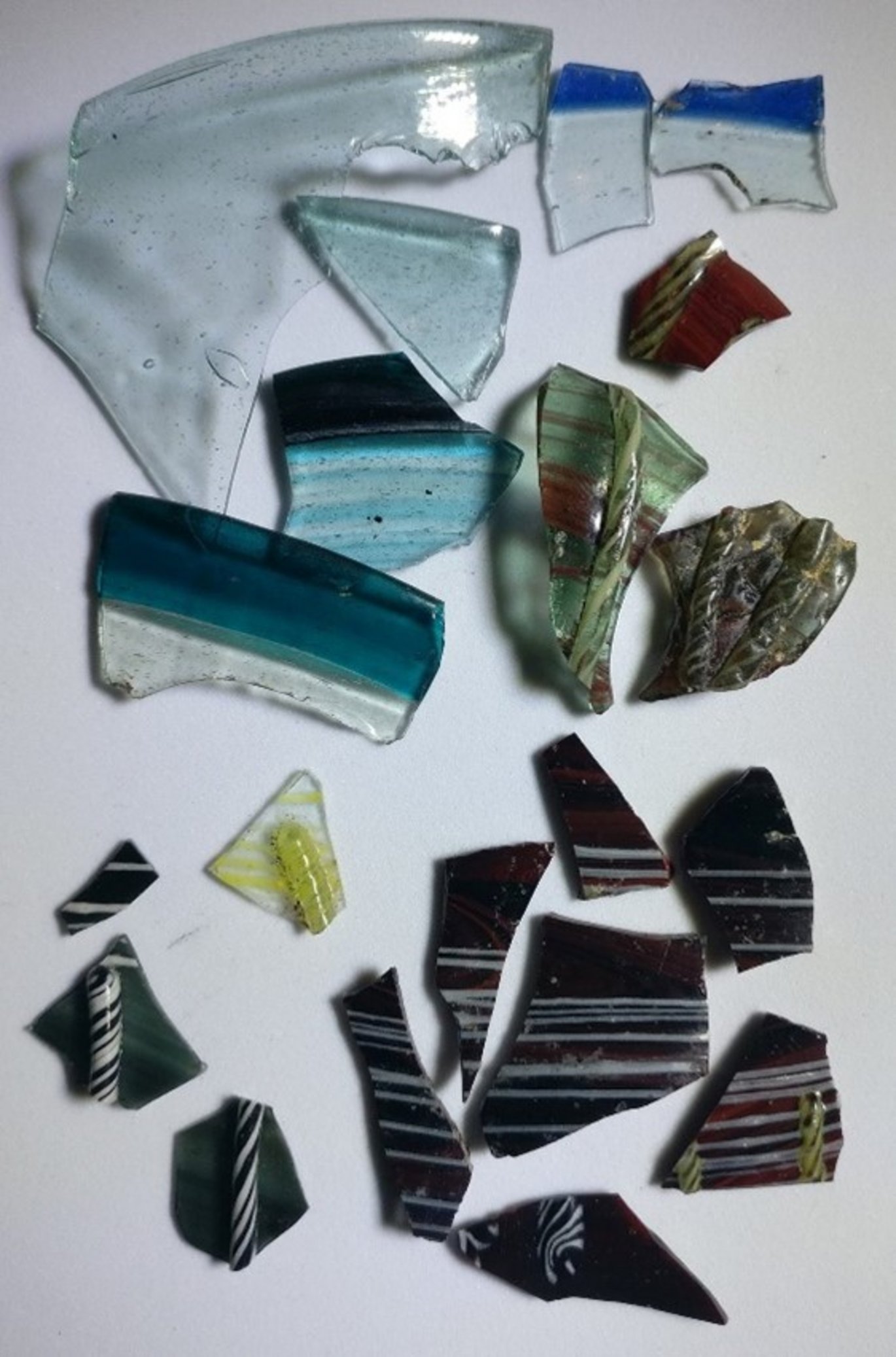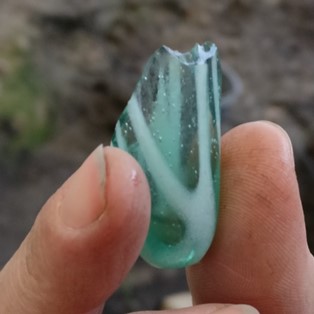New study pinpoints Europe’s earliest glass in Viking trading town
A Danish research team has made a breakthrough in dating the earliest production of glass in Europe. Using innovative geochemical methods to analyse glass finds from Ribe, Scandinavia’s oldest town, the team from Aarhus University and Museum Vest were able to pinpoint the introduction of Europe’s first glass industry around AD 790.


Link to the paper here: http://doi.org/10.1111/arcm.12968
The Carlsberg-Foundation excavation project “Northern Emporium” produced the largest known volume of glass finds from any site in Viking Age in Northern Europe. Taking advantage of the unique high-definition chronology developed for this key trading site at the Danish National Research Foundation’s UrbNet centre, geochemist Gry Barfod together with archaeologists Lene L. Feveile and Søren M. Sindbæk could single out the first arrival of vessels made from Carolingian Wood Ash Glass – the beginning of Europe’s medieval glass industry.
During the early Middle Ages, glass played an essential role in the construction of the palaces, cathedrals and monasteries that marked the foundation for the newly established Carolingian empire in Northwestern Europe. At the same time, at the northern edge of this empire, the Viking-Age Scandinavians were likewise major consumers of glass, used for ornamentation (beads) and drinking glasses.
For centuries most of the glass that sustained both of these societies was recycled materials transported from the eastern Mediterranean where it had been stripped from abandoned Roman buildings. However, during the reign of the emperor Charlemagne (r. 768-814), the first glass industry was introduced in Northern Europe. This so-called ‘wood-ash’ glass was produced from ashes of burned beach trees mixed with quartz (sand) pebbles and is believed to have been first produced near the palace of Paderborn. However, the timing of the earliest production is uncertain as the estimates are based on indirect evidence.
The Viking trading site at Ribe on the North Sea coast was prolific with vast productions on site of brooches, glass beads and combs among others. Trading was active here from ca. AD 700 to 900 and the excavations in 2017–2018, funded by the Carlsberg Foundation, revealed a nearly undisturbed stratigraphy with thousands of pristinely preserved artefacts. They included nearly 20,000 pieces of glass, all recently published: https://en.unipress.dk/udgivelser/n/northern-emporium-vol-2/
Using new high-definition approaches in these excavations allowed for the first time for a resolution down to a few decades within the extremely well-preserved stratigraphy – results presented 2022 in the journal Nature: https://www.nature.com/articles/s41586-021-04240-5.
This gave three researchers the idea to use this chronological framework to date the first arrival of Emperor’s Charlemagne’s new glass – and thus for the first time precisely date its appearance in the historical record.
By combining a series of sophisticated geochemical methods, the team was able to screen nearly 250 glass sherds, carefully selected throughout the entire stratigraphy of the trading site. They could determine that no Wood Ash Glass was found before c. AD 790, but that the new glass type became abundant soon after that date.
They furthermore found wood-ash glass to feature prominently from that point forward. The results accord with estimates proposed for sites in Charlemagne’s empire. Thus, very close trade ties existed between the Vikings in Ribe and the Charlemagne’ kingdom to the South.
The study was an interdisciplinary collaboration between professor Søren Sindbæk from Aarhus University, who in collaboration with Museum of Southwest Jutland headed the archaeological excavations in Ribe and directed The Northern Emporium Project that explores Ribes role in earliest urban networks, geochemist Gry Barfod from Geoscience at Aarhus University, and archaeologist Lene Feveile at Museum Vest, a world-renowned expert of viking glass vessels.
The results are published in Archaeometry and the project was funded by the Carlsberg Foundation (Norther Emporium Project) and the Danish National Research Foundation under Grant DNRF119 (Centre of Excellence for Urban Network Evolutions (UrbNet).
Contacts
Gry Barfod grybarfod@geo.au.dk
Lene Lund Feveile lenefeveile@gmail.com
Søren Michael Sindbæk farksms@cas.au.dk
